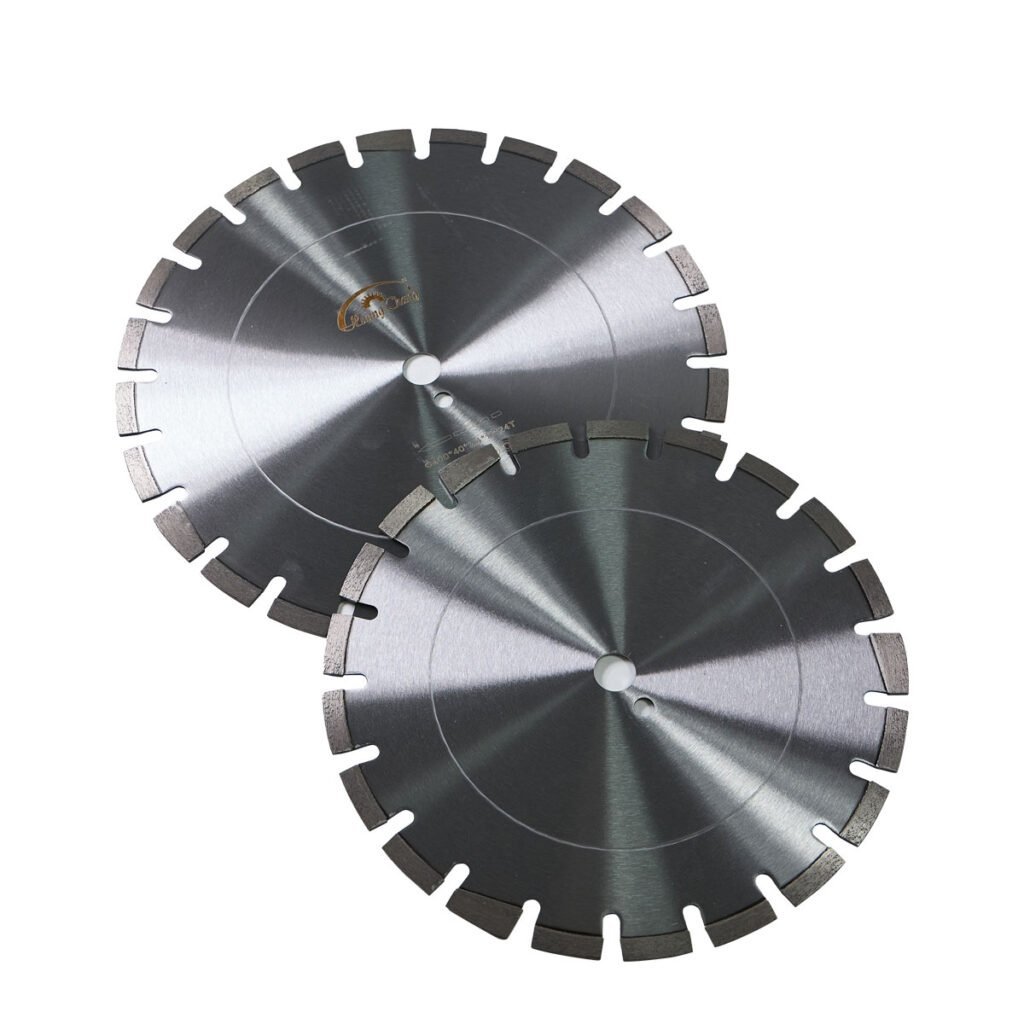To cut concrete effectively, a diamond blade is typically used due to its ability to grind through hard, abrasive materials. Here are the key details:

Types of Diamond Blades:
- Segmented Rim: Features gaps between segments for cooling. Ideal for dry cutting (e.g., with handheld saws or angle grinders). Commonly used for fast, aggressive cuts.
- Continuous Rim: Smooth edge for wet cutting (water-cooled), providing clean, precise cuts. Often used in tile saws or precise work.
- Turbo Rim: Hybrid design with serrated edges for faster cutting. Works for both wet and dry applications.
Bond Type: The metal matrix (bond) holding the diamonds must match concrete’s abrasiveness. A medium-hard bond is typical, allowing gradual diamond exposure without excessive wear.
Wet vs. Dry Cutting:
- Wet Cutting: Uses water to reduce dust and cool the blade, extending blade life. Requires equipment with water supply.
- Dry Cutting: Uses airflow (via segmented blades) to cool the blade. Generates more dust; requires respiratory protection.
Applications:
- Handheld Tools (angle grinders, circular saws): Smaller blades (4-7 inches) for shallow cuts.
- Walk-Behind Saws: Larger blades (10-14+ inches) for deep cuts in slabs or pavements.
Safety Considerations:
- Use PPE: Safety glasses, gloves, hearing protection, and a respirator (especially for dry cutting).
- Ensure the blade RPM rating matches the tool’s speed.
- Avoid forcing the blade; let it cut gradually to prevent overheating.
Additional Tips:
- For deep cuts, make multiple passes.
- Check blade compatibility with your saw (arbor size, direction of rotation).
- Higher-quality blades with synthetic diamonds offer better longevity.
Diamond blades are the standard for concrete due to their efficiency and durability, outperforming abrasive masonry blades, which wear quickly. Always follow manufacturer guidelines for optimal performance and safety.



